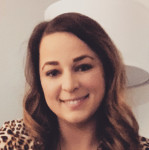
As a young child, I dreamt of being a teacher. I loved school and idolized many of my teachers. I played school at home, teaching my dolls how to add, mimicking the daily chalkboard assignments, even saving my allowance to buy my own coveted overhead projector. Once, I saw a beat-up desk that had been left by the dumpster at school. I begged and pleaded for my parents to bring it home so I could play school. I couldn’t wait to have a class of my own so I could share my love of learning.
In his book Start with Why, Simon Sinek talks in depth about the importance of knowing your “why.” While this model is typically applied to businesses, it can also be applied to people. Many people have a strong why for going into education. Sharing the love of learning was exactly why I wanted to be a teacher. I wanted all kids to be able to find their passion for learning.
The magic of sharing your why
Some of my best memories of teaching are moments when I felt I was sharing my why with students.
My first year in my own classroom, I started every morning asking students to write. I was never a strong writer in school, but now I found it was the best part of many days: the joy of having soft jazz playing in the background, the students’ heads down, writing not because of compliance but because they were truly engaged in their work. During this time, I found scholars who had a drive for poetry, those who loved to write and illustrate stories, and those who just enjoyed the time to be creative.
My fifth-graders did not start their year loving math (which I always adored), so sharing my why in that subject was a little more work. In fact, teaching math was where I found my own passion for using data to drive instruction. Using data, I was able to target my lessons to meet students where they were ready to learn. They started to truly understand, build their confidence, and enjoy our time in math.
No matter your role, whether you’re an educator or not, take time to regularly reflect on your why.
One of my favorite parts was the excitement of reaching the end of a unit and doing a review game. I would typically allow students to solve problems directly on their desks with a dry-erase marker instead of on paper. There is something about writing on your desk that is so liberating for students. Seeing them vigorously writing the problem as part of a review game, hands shoving into the air so they could be the first one called on because they were confident in their answer, I knew that I was meeting my why—and that I had met students where they were in the unit, too.
I also taught science part of the day. Once, when my students were learning about the human body, the topic of the day was bones. We were investigating how the structure of bones supports their movement. I had spent the night before filling toilet paper rolls, some with rocks, others with sponges. Students hypothesized if they thought that bones were solid or spongy on the inside and why. As students explored and experimented with the toilet paper roll “bones,” I could see the curiosity on their faces. Some of my students who rarely engaged with science were truly intrigued to learn that bones were in fact spongy on the inside. The excitement, the questions, and the drive to learn more were all I needed to plan the next lesson. They had found out why, and so had I.
Years later, these are some of the moments that first come to mind as I reflect on my teaching experience, although like any teacher I could think of so many more. But these memories stick with me because these are the moments in which my why was fulfilled.
My why still matters—and so does yours
Now that I have left the teaching world and shifted to my work at NWEA, I still often reflect on my why. It’s changed slightly since my teaching days, but it still drives the work I do. I want to impact the lives of all students, now on a broader scale. I want to leave a mark on our educational system and help educators create equitable opportunities for all students. It is this impact that excites me and drives my work—the moments of not just seeing students find a passion for learning, but also seeing educators find their passion for creating change.
On a rough day, it is your why that brings you back. During a rough year, it is your why that keeps you going.
Recently, I was supporting a smaller school in learning more about NWEA school improvement services. In this conversation, they shared what systemic change they would like to occur to create the best opportunities for all students within their school. As we discussed the culture of their school, their struggles, and their victories, I felt as though I was a part of their community. Knowing that we had something that could help make the shift they desired was so invigorating. I left the conversation with my passion reignited and a true excitement about the change that could occur. In the end, kids would be impacted in such a positive way.
No matter your role, whether you’re an educator or not, take time to regularly reflect on your why. Over the years, your why may change. However, it is essential to keep it at the forefront of what you do. On a rough day, it is your why that brings you back. During a rough year, it is your why that keeps you going. So, I challenge you: how often are you recentering yourself on your why?







